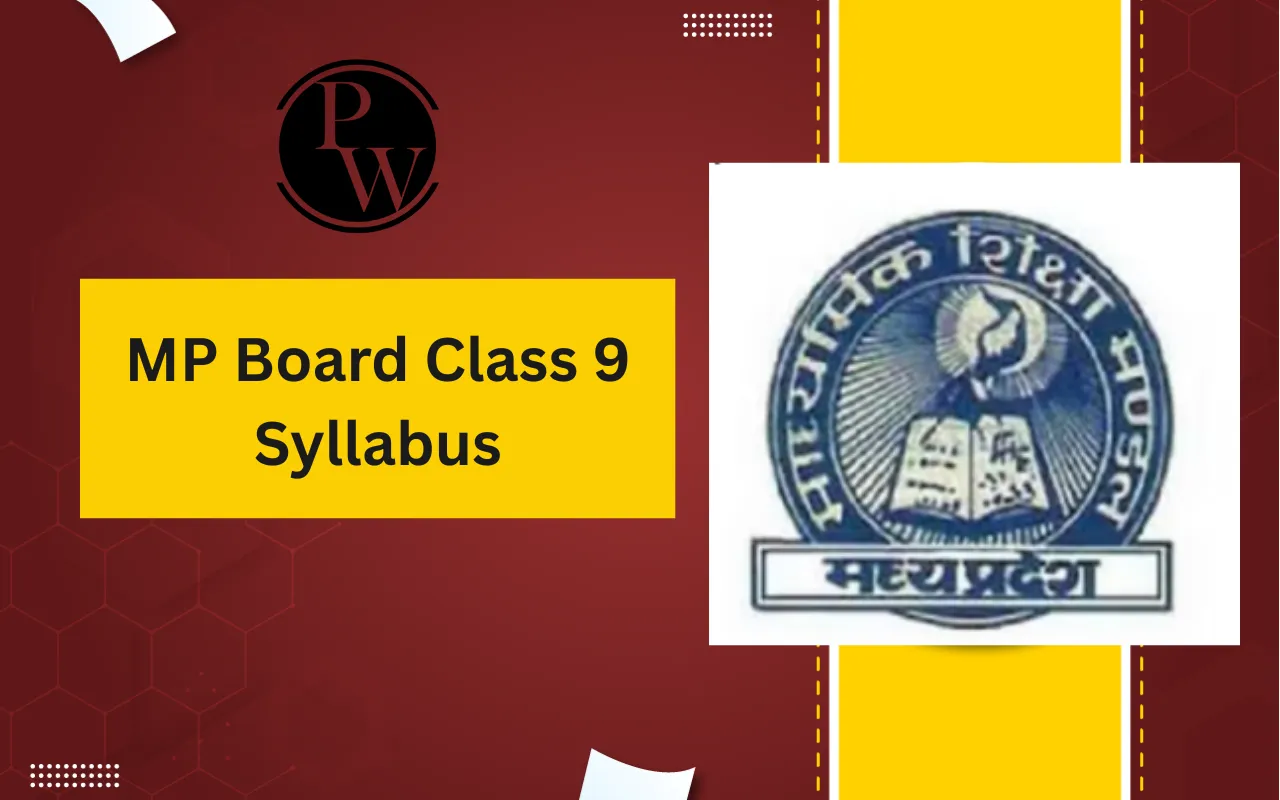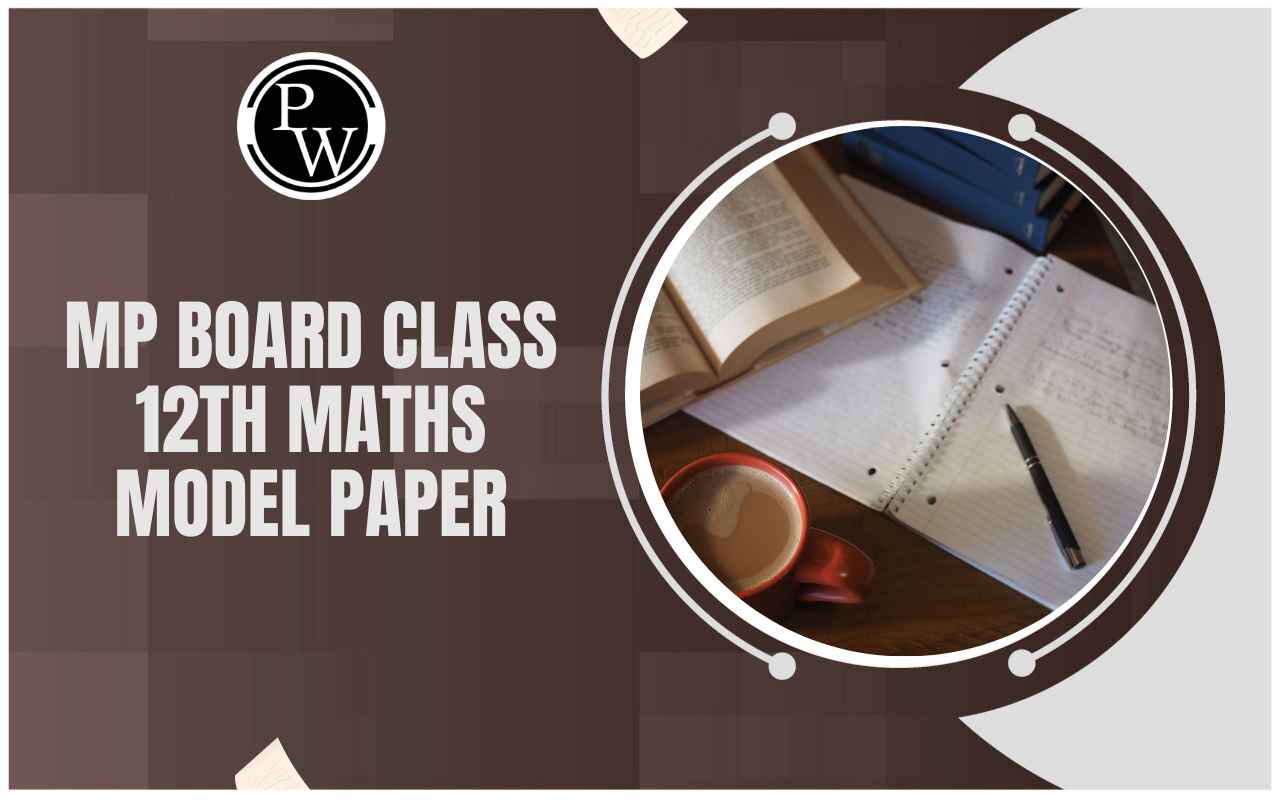
MP Board Class 12th Chemistry Syllabus: The MP Board releases a combined syllabus every year for Classes 9 to 12 on its official website mpbse.nic.in. The Class 12 Chemistry syllabus for 2025 provides a detailed outline of the chapters, topics, exam pattern, and marking scheme that students must follow throughout the academic year.
Science stream students should thoroughly understand this syllabus to plan their preparation effectively and score well in their board exams. Having a clear understanding of the syllabus enables students to prioritize important chapters, allocate study time wisely, and avoid last-minute confusion during exam preparation.
MP Board Class 12 Chemistry Syllabus 2025 Highlights
The Madhya Pradesh Board of Secondary Education (MPBSE) conducts the Class 12 board exams annually, making it crucial for students to thoroughly understand the syllabus. The Class 12 Chemistry syllabus for 2025 covers essential topics like Electrochemistry, Chemical Kinetics, Coordination Compounds, Biomolecules, and more. The syllabus is designed to enhance students’ conceptual knowledge, analytical skills, and practical understanding. Below are the key highlights of the MP Board Class 12 Chemistry Syllabus for 2025:
|
MP Board Class 12 Chemistry Syllabus 2025 Highlights |
|
|
Particulars |
Details |
|
Conducting Body |
Madhya Pradesh Board of Secondary Education (MPBSE) |
|
Academic Year |
2025 |
|
Official Website |
mpbse.nic.in |
|
Subject Name |
Chemistry |
|
Mode of Examination |
Written Exam (Pen and Paper) |
|
Time Duration |
3 Hours |
MP Board Class 12 Chemistry Syllabus 2025 Course Structure
MP Board Class 12 Chemistry syllabus for 2025 covers a wide range of essential topics that build a strong foundation in both theoretical and practical chemistry. The table below summarizes the key units and important concepts included in the syllabus to help students plan their studies effectively.
|
MP Board Class 12 Chemistry Syllabus 2025 Course Structure |
|
|
Unit/Topic |
Key Concepts Covered |
|
Solid State |
Electrical and magnetic properties, packing efficiency, voids, number of atoms per unit cell, point defects |
|
Solutions |
Osmotic pressure, molecular mass determination using colligative properties, boiling point elevation, freezing point depression, abnormal molecular mass |
|
Electrochemistry |
Kohlrausch’s Law, lead accumulator, conductance in electrolytic solutions, variation of conductivity with concentration |
|
Chemical Kinetics |
Integrated rate equations, half-life, collision theory (elementary concept, no math treatment) |
|
Surface Chemistry |
Brownian movement, electrophoresis, lyophobic, multimolecular and macromolecular colloids, Tyndall effect, coagulation, emulsions |
|
General Principles and Processes of Isolation of Elements |
Occurrence and extraction principles of aluminium, copper, zinc, iron; methods like concentration, oxidation, reduction, electrolytic refining |
|
p-block Elements |
Halides (PCl₃), ozone, allotropes of sulphur and phosphorus, preparation, properties, and uses of sulphur dioxide |
|
d and f-block Elements |
Magnetic properties, interstitial compounds, metallic character, ionization enthalpy, preparation and properties of K₂Cr₂O₇ and KMnO₄ |
|
Coordination Compounds |
IUPAC nomenclature, bonding theories (Werner’s, VBT, CFT), ligands, coordination number, structure, stereoisomerism |
|
Haloalkanes and Haloarenes |
Nomenclature, nature of C–X bond, physical and chemical properties, substitution reactions |
|
Alcohols, Phenols, and Ethers |
Dehydration mechanism, physical and chemical properties, uses (methanol and ethanol emphasis) |
|
Aldehydes, Ketones, and Carboxylic Acids |
Nomenclature, nature of carbonyl group, methods of preparation, physical and chemical properties, uses |
|
Amines (Organic Compounds Containing Nitrogen) |
Classification, structure, methods of preparation, secondary and tertiary amines |
|
Biomolecules |
Monosaccharides (glucose, fructose), polysaccharides (starch, cellulose, glycogen), importance |
|
Polymers |
Biodegradable and non-biodegradable polymers, important examples like natural polymers, bakelite, rubber |
|
Chemistry in Everyday Life |
Tranquillizers, antiseptics, disinfectants, antacids, antihistamines, artificial sweetening agents |
MP Board Class 12 Chemistry Syllabus 2025 Download PDF
The MP Board Chemistry syllabus for Class 12 in 2025 includes all essential chapters and topics according to the updated curriculum. Students are advised to review the syllabus thoroughly to prioritize their preparation, giving more attention to chapters with higher marks and key concepts. Keeping a printed copy of the syllabus allows for better tracking of study progress and efficient revision planning. The official syllabus PDF for Class 12 Chemistry 2025 is available below for download:
MP Board Class 12th Chemistry Syllabus
Study without using the internet
MP Board Class 12 Chemistry Reduced Syllabus 2025
To enhance learning efficiency, the MP Board has revised and reduced the Class 12 Chemistry syllabus for 2025 by removing some sections. The updated syllabus retains all the core topics necessary for a strong understanding of Chemistry, as summarized in the table below.
|
MP Board Class 12 Chemistry Reduced Syllabus 2025 |
|
|
Chapters |
Topics Covered |
|
Solid State |
Classification of solids, Calculation of density of unit cell, Electrical and magnetic properties |
|
Solutions |
Types of solutions, Depression of freezing point, Abnormal molecular mass |
|
Electrochemistry |
Redox reactions, Kohlrausch’s Law, Lead accumulator |
|
Chemical Kinetics |
Rate of a reaction, Rate law and specific rate constant |
|
Surface Chemistry |
Adsorption, Colloidal state, Properties of colloids, Emulsions – types of emulsions |
|
General Principles and Isolation of Elements |
Concentration, Occurrence and principles of extraction of aluminium |
|
P-Block Elements |
Group 15, 16, 17 and 18 elements |
|
D and F Block Elements |
General introduction, Lanthanoids, Actinoids |
|
Coordination Compounds |
Introduction, Coordination number, Bonding |
|
Haloalkanes and Haloarenes |
Haloalkanes, Haloarenes, Dichloromethane’s use and environmental impacts, Freons, DDT |
|
Alcohols, Phenols, and Ethers |
Nomenclature, Physical and chemical properties, Uses |
|
Aldehydes, Ketones, and Carboxylic Acids |
Nomenclature, Uses, Methods of preparation |
|
Organic Compounds Containing Nitrogen |
Amines, Cyanides and Isocyanides, Diazonium salts |
|
Biomolecules |
Carbohydrates, Proteins, Vitamins, Nucleic Acids |
|
Polymers |
Natural and synthetic, Important polymers like nylon, polyesters |
|
Chemistry in Everyday Life |
Chemicals in medicines, Food and other agents |
How To Download MP Board Class 12 Chemistry Syllabus 2025?
To download the MP Board Class 12 Chemistry Syllabus for 2025, follow these simple steps:
Step 1: Visit the official MP Board website at mpbse.nic.in.
Step 2: On the homepage, look for the "Important Notice" or "Academics" section.
Step 3: Find and click on the link for the syllabus of Class 12 for the year 2025.
Step 4: Select the Chemistry syllabus from the list of subjects.
Step 5: The syllabus PDF will open on your screen. You can then download and save it for your reference.
Preparation Tips MP Board 12th Chemistry Syllabus 2025
Here's the important MP Board 12th Preparation Tips 2025
-
Thoroughly review the entire syllabus to understand all topics.
-
Identify important chapters and focus on them more.
-
Prepare concise notes for quick revision before exams.
-
Create a study timetable covering the entire syllabus with time for a second revision.
-
Pay attention to chapter-wise marking distribution to prioritize topics.
-
Practice MP Board Class 12 Previous Year Question Papers and sample papers to understand the MP Board Class 12 Exam Pattern.
-
Revise regularly to retain concepts better and improve problem-solving skills.
MP Board Class 12th Chemistry Syllabus FAQs
Where can I download the MP Board Class 12 Chemistry syllabus for 2025?
Is there a reduced syllabus for MP Board Class 12 Chemistry in 2025?
What are the major topics covered in the MP Board Class 12 Chemistry syllabus?
How can the syllabus help in exam preparation?










